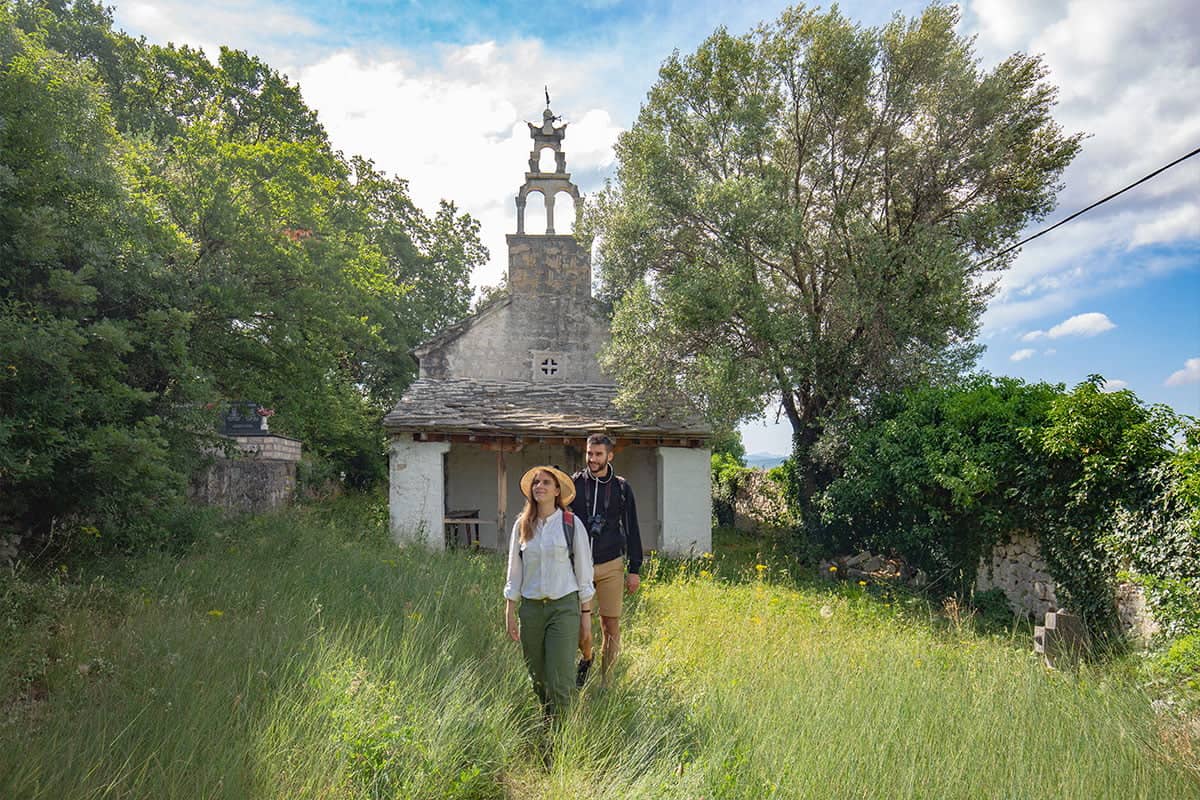
The Orthodox Church of St. Peter and Paul, built in 1505, is located in the village of Ošanjići, around 3 km from Stolac. It is believed that the name Ošanići or Ošanjići is derived from the Persian “Hoš ana/e” meaning good people. In front of the church doors there is a grave slab with an inscription of the duke Radoav Hrabren who was the ktitor (donor) of the church (“Here lies duke Radosav Hrabren”). Two chairs hewn in living rock located close to the church (known as judge chairs) are an essential symbol of power and respect for the feudal class. According to local tradition, the chairs served feudal lords for executing judiciary functions. Their significance is reflected in the fact that the name of the town of Stolac is probably derived from them.
The church is dedicated to the apostles St. Peter and St. Paul. The day of St. Peter and Paul is celebrated on 12th July in the new calendar or 29th June in the old (Julian) calendar. According to local beliefs, St. Peter brings warm weather to allow wheat to ripen. Around St. Peter’s day, the first figs known as Peter figs are ripe in the Herzegovina region. In the past, there was a custom to burn special torches made of dried cherry or birch bark around St. Peter’s day.
The ktitor (founder, donor) of the church was duke Radosav from the family Hrabren Miloradović, who is buried at its entrance. The large Hrabren family owned large amounts of land, livestock and serfs at the time of the Bosnian kingdom. Parts of the family lived in Crnići, Dubrave, Trijebanj and Žitomislići. The names of the famous and long-living Herzegovinian family are noted in Turkish property census documents from 1468-1469 and 1477, mentioning the sons of duke Stjepan, Petar, Radoje and Vukić as Ottoman timar (feud) holders.